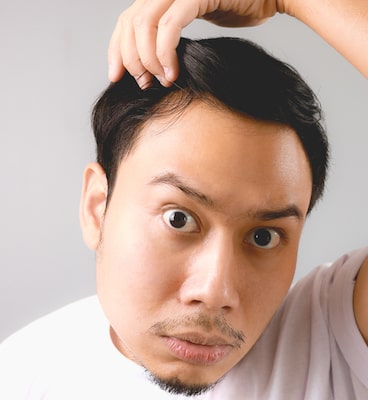Hair Loss Treatments – What Does the Future Hold?
The future of hair loss treatments is looking rather bright for patients. There has been recent research conducted on mice that shows there might be a new way to restore hair in the future. In addition, there are other potential hair loss treatments that are close to undergoing clinical trials in human patients. Let’s take a look at the future of hair loss treatments to learn more about the procedures that might be available to patients in the coming years.
SCUBE3 to Treat Hair Loss Explained
 The first potential hair loss treatment is one we have discussed in the past. An experimental treatment developed by a research team at the University of California, Irvine, uses a protein molecule that is known as SCUBE3. The work conducted by the research team seems to suggest that SCUBE3 is able to play an important part in the way certain cells that are located at the bottom of the hair follicles induce the growth of hair. These cells are called dermal papilla and the research team has shown that injecting SCUBE3 into the skin of mice is able to produce new hair. These results also include the production of new hair on mice who have received grafted human hair follicles.
The first potential hair loss treatment is one we have discussed in the past. An experimental treatment developed by a research team at the University of California, Irvine, uses a protein molecule that is known as SCUBE3. The work conducted by the research team seems to suggest that SCUBE3 is able to play an important part in the way certain cells that are located at the bottom of the hair follicles induce the growth of hair. These cells are called dermal papilla and the research team has shown that injecting SCUBE3 into the skin of mice is able to produce new hair. These results also include the production of new hair on mice who have received grafted human hair follicles.
These scientists feel that SCUBE3 might be able to be packaged into microbeads that would be injected into the scalps of balding patients. A good comparison for the injections made in the scalp would be the way Botox is injected into the forehead to treat existing fine lines and wrinkles.
While this treatment seems promising, more studies need to be performed, along with the performance of human trials, to learn more about its effectiveness as a hair loss treatment.
New Treatment for Alopecia Areata
This past spring, the Food and Drug Administration of the United States approved the use of baricitinib (an existing drug that is used to treat arthritis) to treat the autoimmune disease known as alopecia areata. Baricitinib is able to suppress the parts of the immune system that have been shown to attack the hair follicles of a person who has alopecia areata. By suppressing the attacking of the hair follicles, a person should see a restoration of hair on their scalp.
Rogaine in a Pill Form
In the past few years, doctors have started to prescribe low doses of minoxidil to patients in a pill form. There is ongoing research about this treatment option but, for the moment, oral minoxidil appears to be as safe and effective as topical minoxidil. Plus, there are some patients who prefer to take their medications, in general, in a pill form so they might find it easier to take a pill on a daily basis.
Patients need to take minoxidil on an ongoing basis in order for it to be effective and work properly. If you stop taking the medication on a regular basis, the hair growth that you have gained will be lost and you will return to the original condition of your thinning or balding hair. You need to be committed to taking the medication on a regular and consistent basis in order to keep enjoying the positive changes to the appearance of the scalp.
New Hair Loss Medications – Are There Any Drawbacks?
While it certainly seems like the future of hair loss treatment is bright for people who are currently balding or those who are worried about balding in the future, there are some aspects of the treatments discussed above that need to be discussed.
None of these treatments will provide overnight changes to the appearance of the scalp. It can take anywhere from six to nine months to see a significant difference in the look of the hair on the scalp.
The loss of hair can certainly have a negative impact on the self-image of a person and also make them afraid or unwilling to appear in front of others if they can possibly avoid it at work or in a social situation. These patients would welcome the growth of new hair on the scalp as it can make them feel more confident in their look as well as make them feel more youthful about their appearance.
It is also important to remember that the hair is a complex organ that has its own mechanisms and rules when it comes to the growth of hair along with the loss of hair. Patients who are interested in learning more about existing and proven hair loss treatments should schedule a consultation appointment with a board-certified surgeon who is experienced in identifying the reasons for hair loss along with treating the loss of hair on the scalp. The doctor can share the best available options for treating balding and thinning hair according to the specific needs of the patient. The doctor can also set realistic expectations for the amount of hair regrowth the patient can expect using the hair restoration method suggested by the doctor.